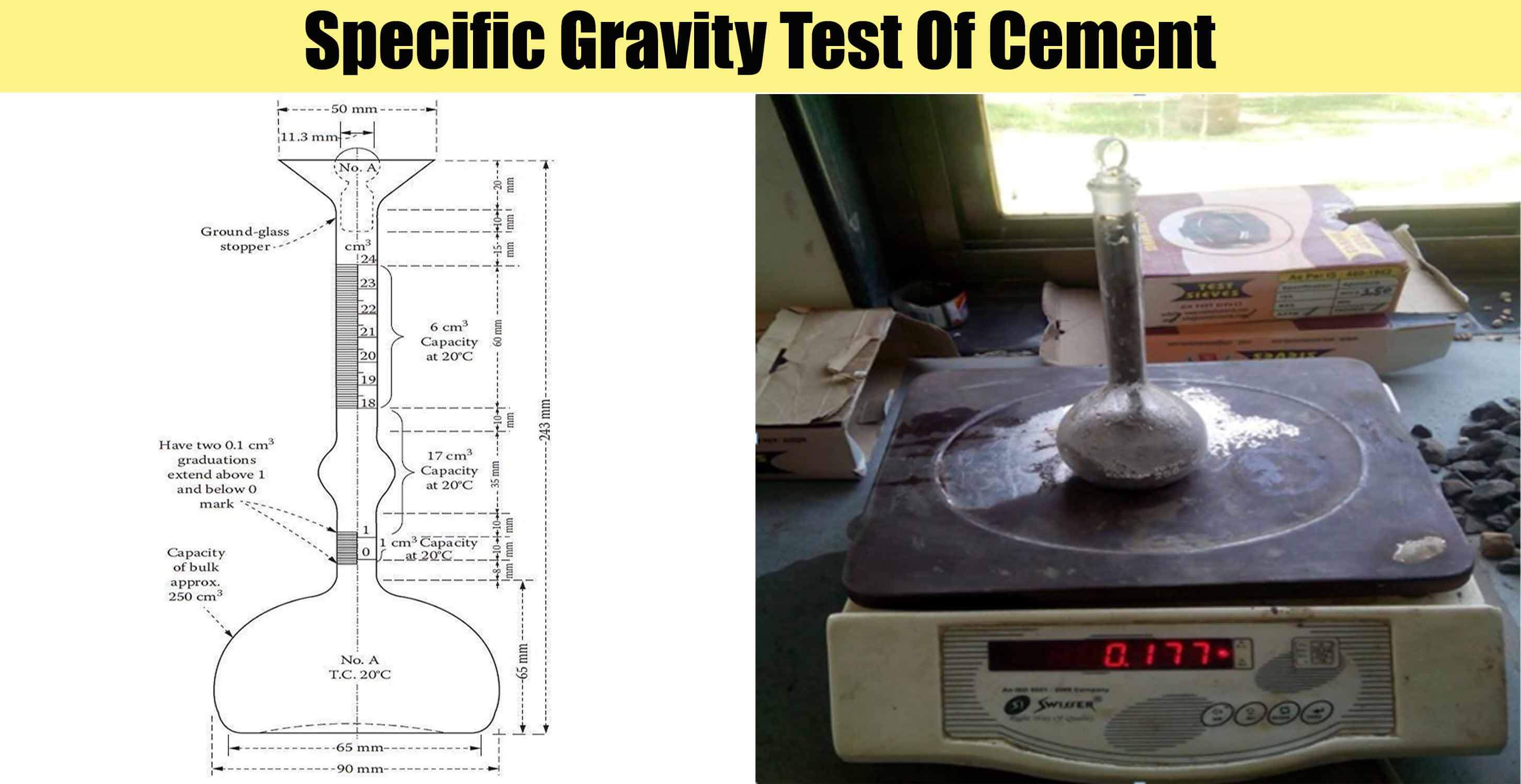Aim
To determine the specific gravity of cement value
Apparatus
1- Le Chaterliers flask
2- Weighing balance and kerosene (free from water).
3- Le Chaterliers flask is made of thin glass having a bulb at the bottom. The capacity of the bulb is nearly 250 ml. The bulb is 7.8 cm in mean diameter. The stem is graduated in millimetres. The zero graduation is at a distance of 8.8 cm from the top of the bulb. At 2 cm from the zero, there is another bulb is of length 3.5 cm and capacity 17 ml. At 1 cm from the bulb, the stem is marked with 18 ml and is grated up to 24 ml. The portion above 24 ml mark is in the form of a funnel of diameter 5 cm.k.
Procedure
1- Dry the flask carefully and fill with kerosene or naphtha to a point on the stem between zero and 1 ml.
2- Record the level of the liquid in the flask as initial reading.
3- Put a weighted quantity of cement (about 60 gm) into the flask so that level of kerosene rise to about 22 ml mark, care being taken to avoid splashing and to see that cement does not adhere to the sides of the above the liquid.
4- After putting all the cement to the flask, roll the flask gently in an inclined position to expel air until no further air bubble rises to the surface of the liquid. Note down the new liquid level as a final reading.
Observation and calculations
- Weight of cement used =W gm
- An initial reading of flask =V1 ml
- The final reading of flask =V2 ml
- The volume of cement particle= V2-V1 ml
- Weight of equal of water= (V2-V1) x specific weight of water.
The specific gravity of cement = (Weight of cement/ Weight of equal volume of water)
= W/(V2-V1)
Notes
1- Duplicate determination of specific gravity should agree within 0.01.
2- To get a more accurate result, the flask should be held at a constant temperature before each reading is taken.
Technical discussion
Why do we perform a specific gravity test of cement?
The specific gravity of cement is tested in order to know the various atmospheric effects on the moisture content of cement.
Generally, nominal Mix design is based on the value of specific gravity of cement as 3.15. The value will change over time if the cement is exposed to various weather conditions. So it is essential to determine the specific gravity of cement before using it.
The specific gravity of the cement will differ if it is exposed to extreme moisture content (weather), due to moisture content present in the pores.
What is specific gravity?
Specific gravity is normally defined as the ratio between the weight of a given volume of material and weight of an equal volume of water.
Why kerosene is used in specific gravity of cement?
To determine the specific gravity of cement, kerosene which does not recent with cement is used (which means kerosene does not react with cement). The mass of a unit volume of the solids or particles, excluding air between particles.
The specific gravity of cement range
The particle density of Portland cement ranges from 3.10 to 3.25 Mg/m³, averaging 3.15 Mg/m³. For mixture proportioning, it may be more useful to express the density as relative density (specific gravity). On average, the specific gravity of cement is 3.15


